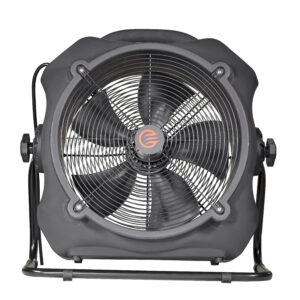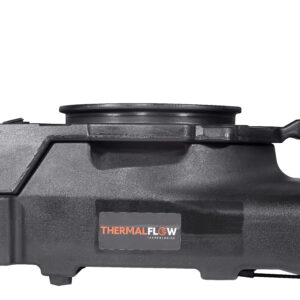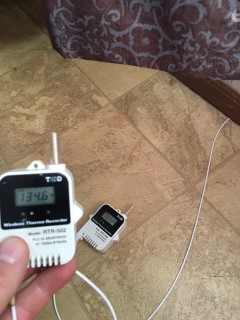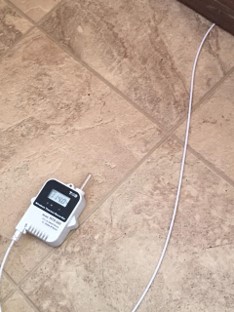Heat treatments are a proven method for eliminating bed bugs, and are arguably the best approach for single-day elimination. We have previously covered topics regarding why heat treatments can fail, one of the main culprits is lack of airflow in the treatment space. Air movers or air mover fans, are essential to the treatment because they help stratify the air and deliver the usable heat. In the following paragraphs, we will cover the purpose of the variety of air movers, as well as proper placement of air movers for bed bug treatments.
Let’s start with the different types of air movers, as it will help provide context when explaining proper placement. The 3 types of air movers are as follows:
- Centrifugal– Higher volume of air concentrated along flooring surfaces, great for driving air underneath baseboards; not ideal for circulating large volumes of air
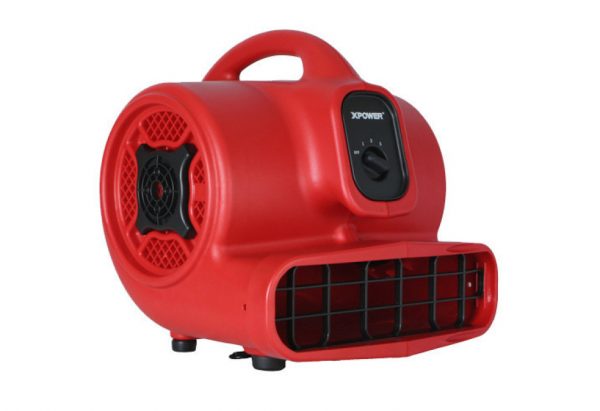
- Axial-Large air path ideal for moving and blending large volumes of air throughout a structure, along wall space and to furniture
- Low-profile-Same benefits as centrifugal, great for tight cluttered spaces and can be placed flat, on its side, and on its back blowing towards the ceiling. Also pulls air down from the ceiling into the top of the air mover.
Placement of Air Movers
In order to optimize airflow, you must place the air movers with the least amount of obstructions directly in front of the air mover. Secondly, you must place air movers in a continuous path, avoiding pointing them where the air path collides. Some air movers, like the Axial Air Mover, have arrows on the side of the fan to assist with placement. For this particular air mover, you do not want to place the equipment with the arrows facing each other.
Air movers for bed bug treatments should be placed at a 22-45 angle at a wall will perform two key functions: 1) driving measurable airflow into the wall voids, and 2) creating a “ricochet” affect that helps heated air bounce to the adjoining wall, creating a circular or “vortex” affect. To see this placement, click here. Placing a fan the opposite side of the room at the same angle, discharging away from the other air mover, will help create a circular motion in the room and even out the temperature. Axial air movers have a tendency to be a better choice for this function, as the larger air path will help cover a broader surface of the walls. The exception is when furniture creates obstructions, or there is not enough room to place the axial. In this case, a low-profile air mover would be a good choice since it can sit on its side, and fit in a narrow space.
Troubleshooting
If you find that you are having difficulty getting an area heated up, especially in a whole structure treatment, air mover placement is normally the solution. If you placed a fan in the threshold of the door into the room, you have likely created an “air curtain”. The air mover is blowing into the room, air is bouncing off an object/wall, and returning back over the top of air mover. When it does this, you are getting some heat into the room, but you are basically recycling the same air while blocking most of the heated air from mixing and entering the room. Try placing the air mover 12-24 inches outside of doors in heat treatments.
If you make the change in air mover placement as recommended above, and the temperature is still climbing slowly, take the air mover and place it in the back of the room blowing out. It sounds counter-intuitive, but it will create the same “looping” effect, and will help draw heated air into the room.
If you find that a wall is not heating properly, chances are there is not enough airflow. The fix is simple: place an air mover blowing at the wall. The picture below was taken from a job site. The temperature had been held at approximately 135 degrees F in the space for 3 hours when the first picture was taken. No air movers were directed specifically at the wall, and it read at 102.2 F. An air mover was then directed at the same spot, and climbed 11.8 degrees F to 114 degrees F within 10 minutes. This demonstrates the importance of air mover placement in bed bug treatments.
There are so many different nuances in structures that may affect how quickly they heat, but strategic air mover placement in bed bug treatments will increase success, speed projects, and help reduce the risk of damage.

